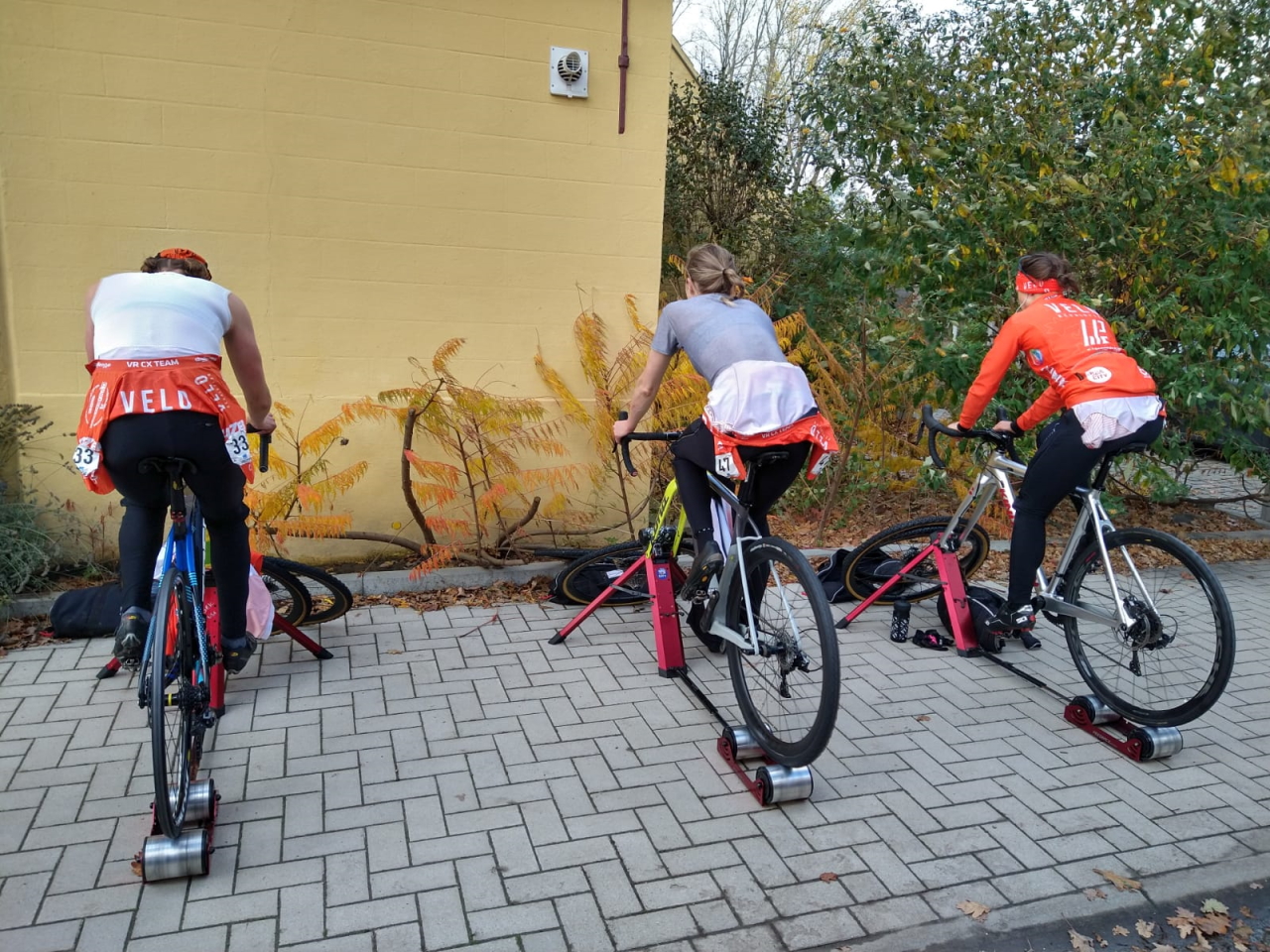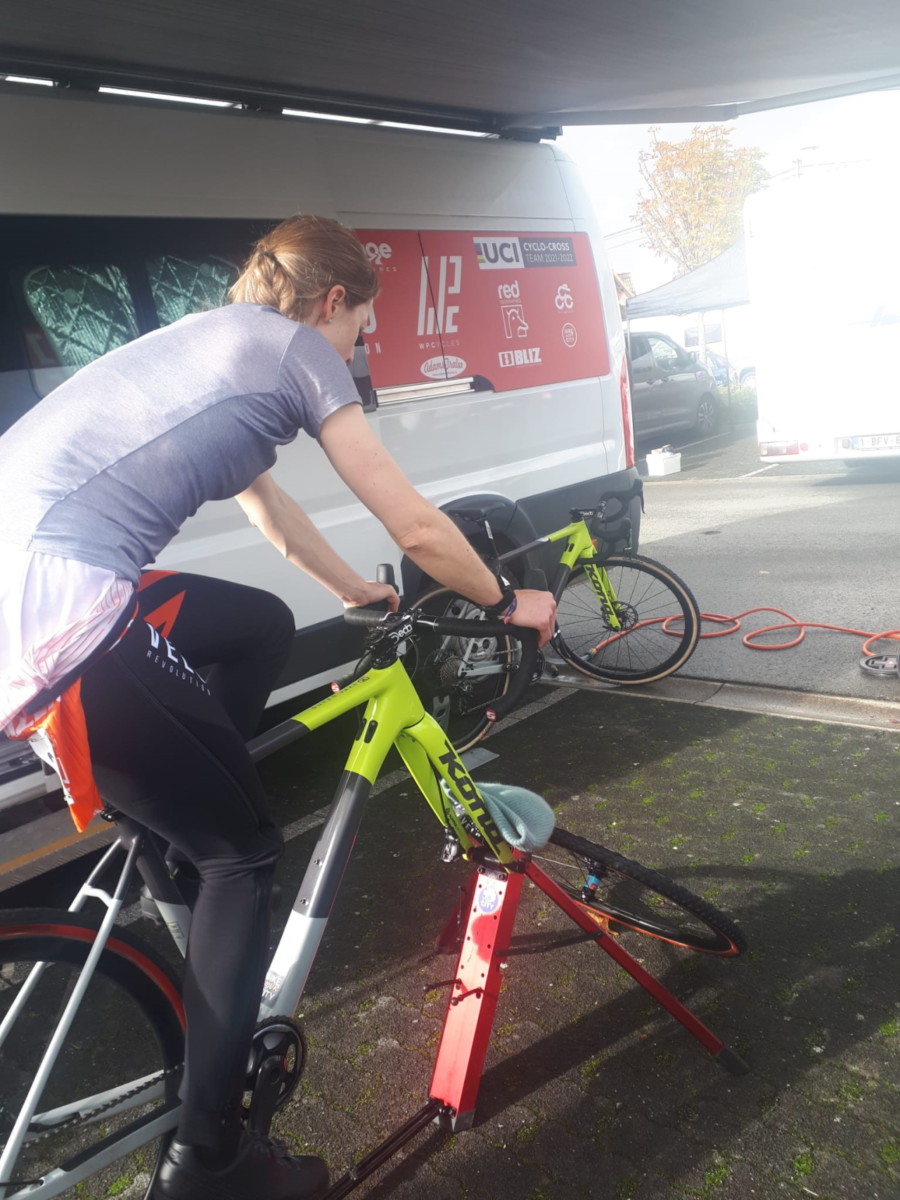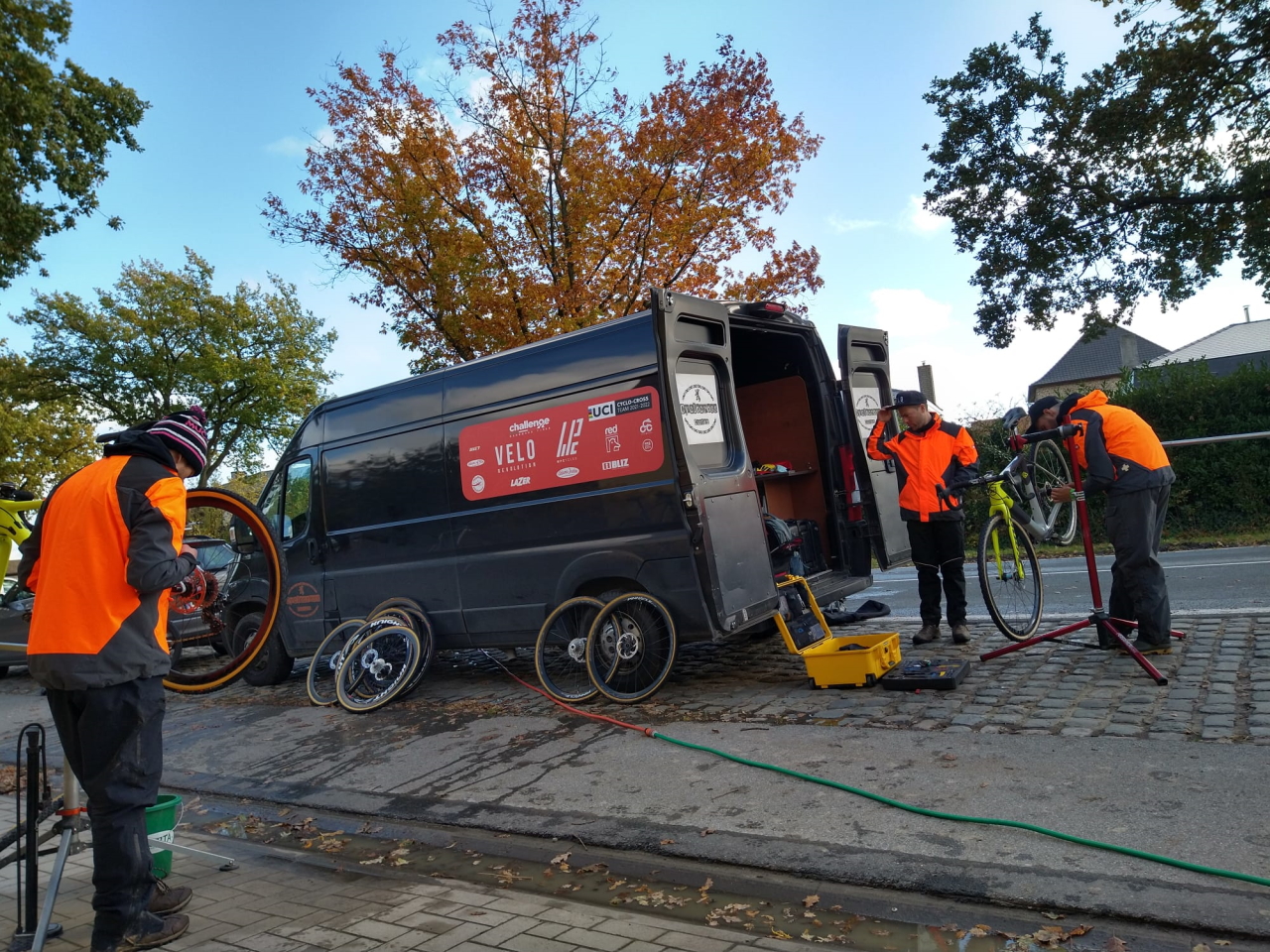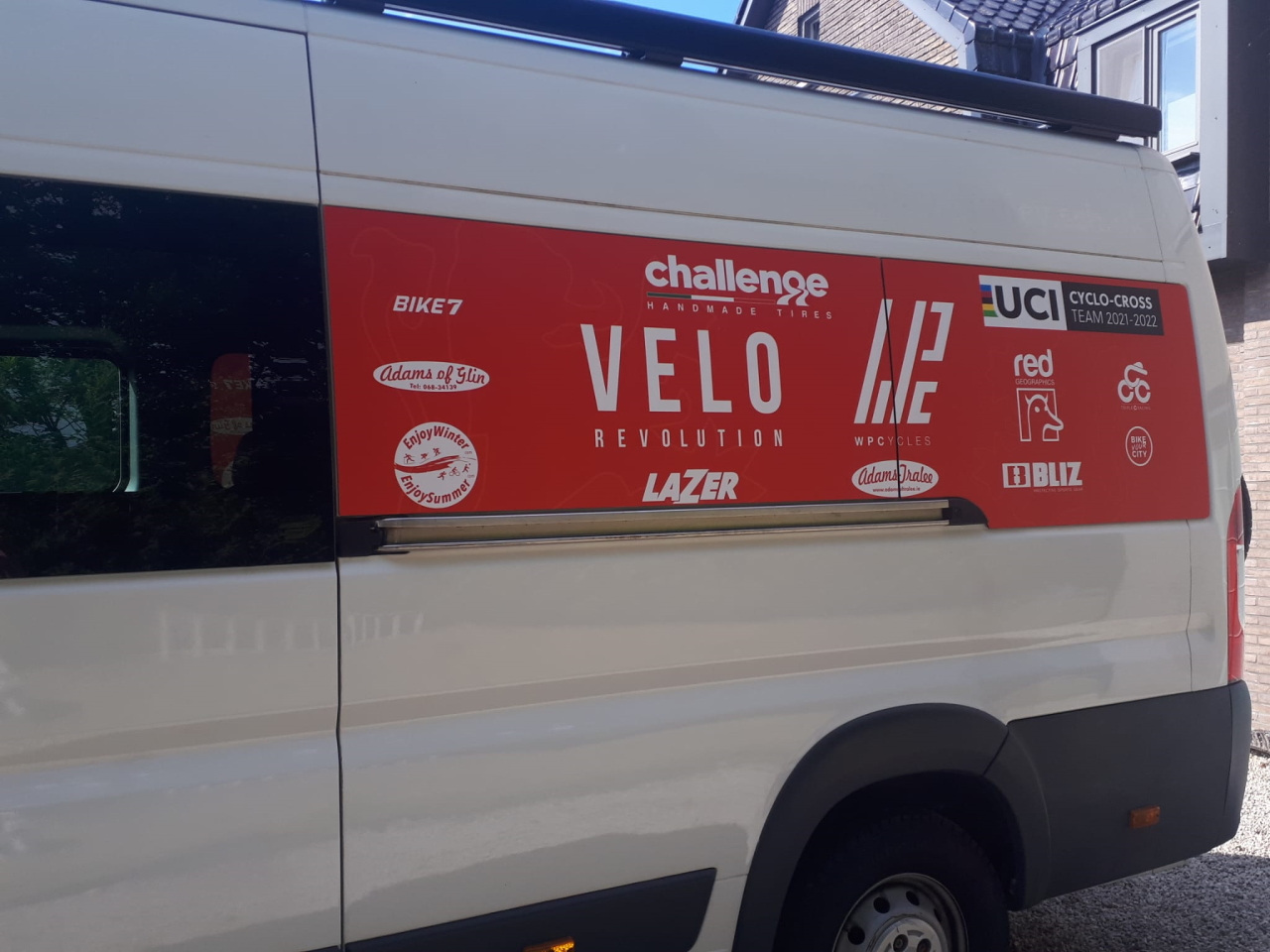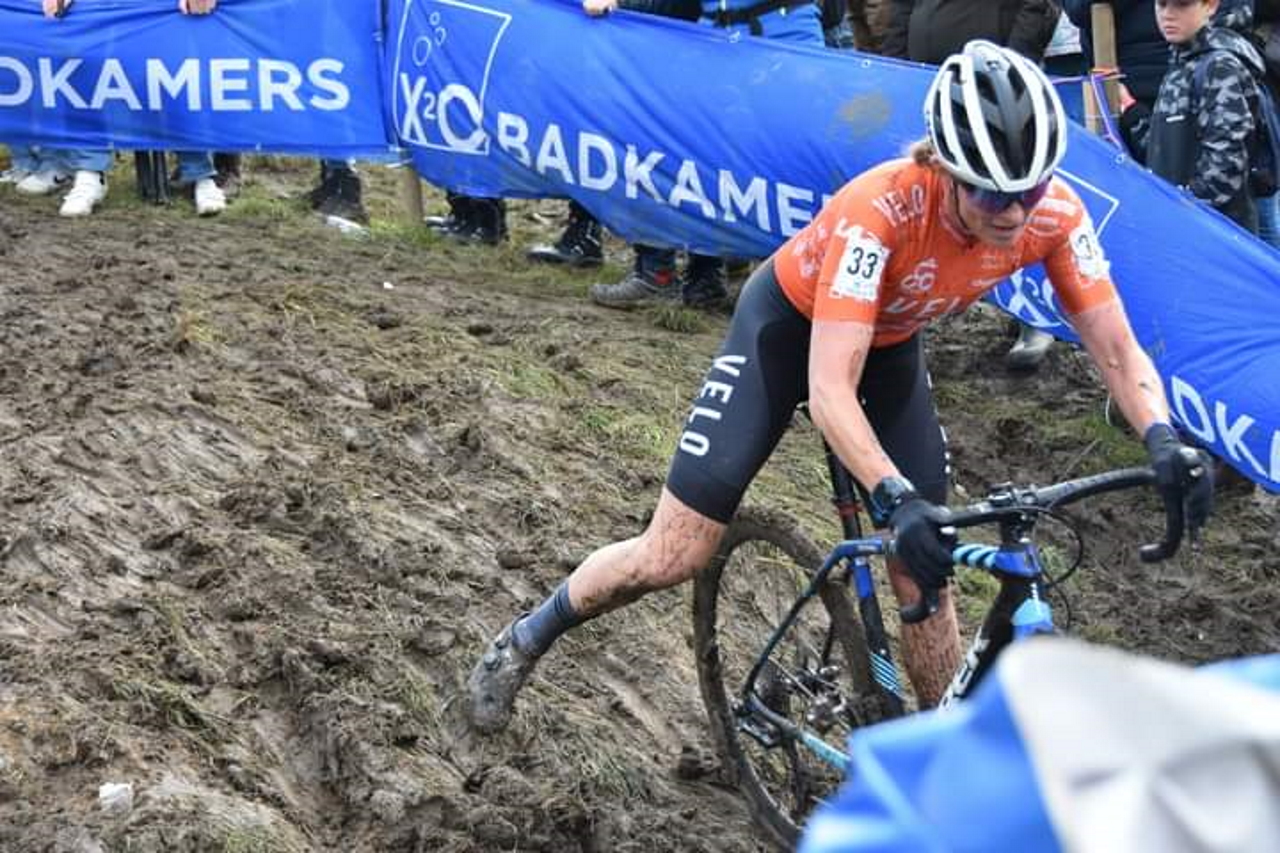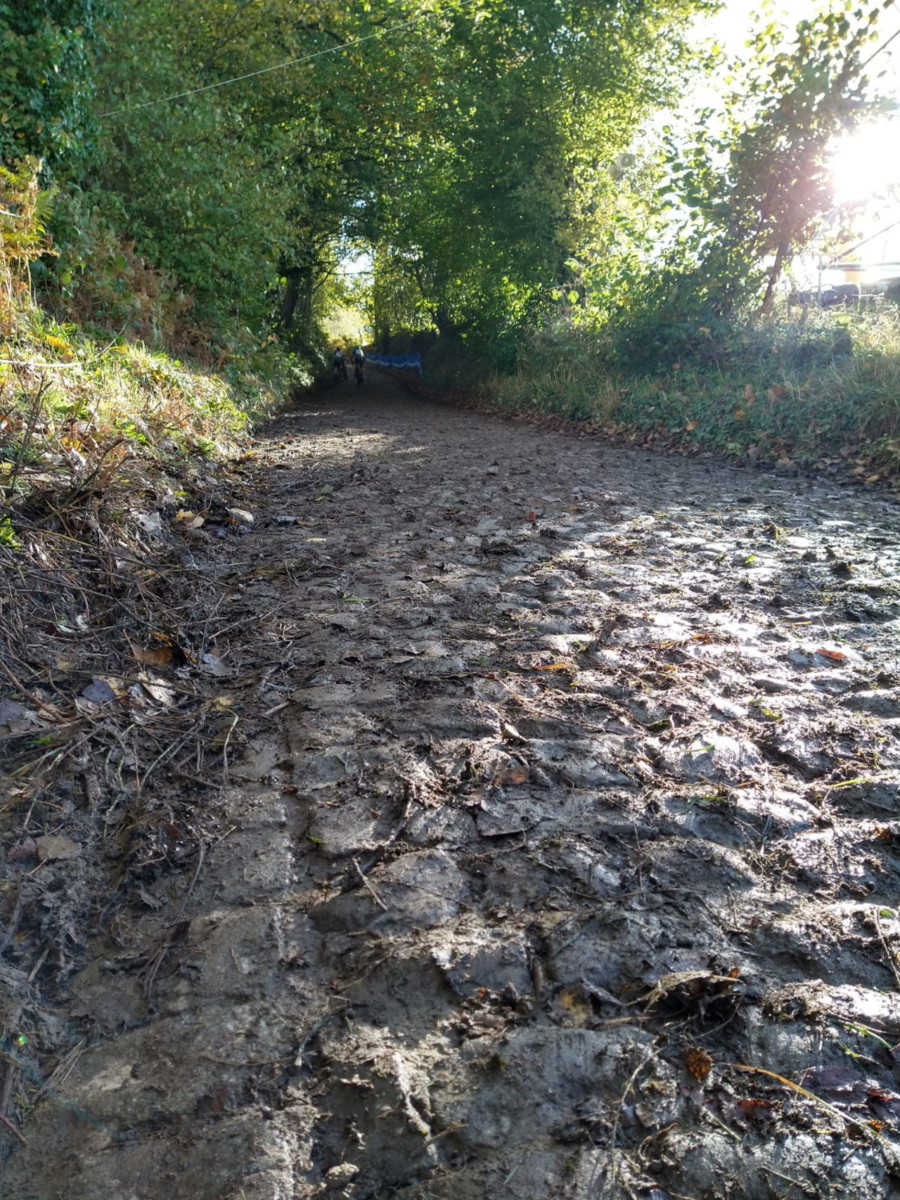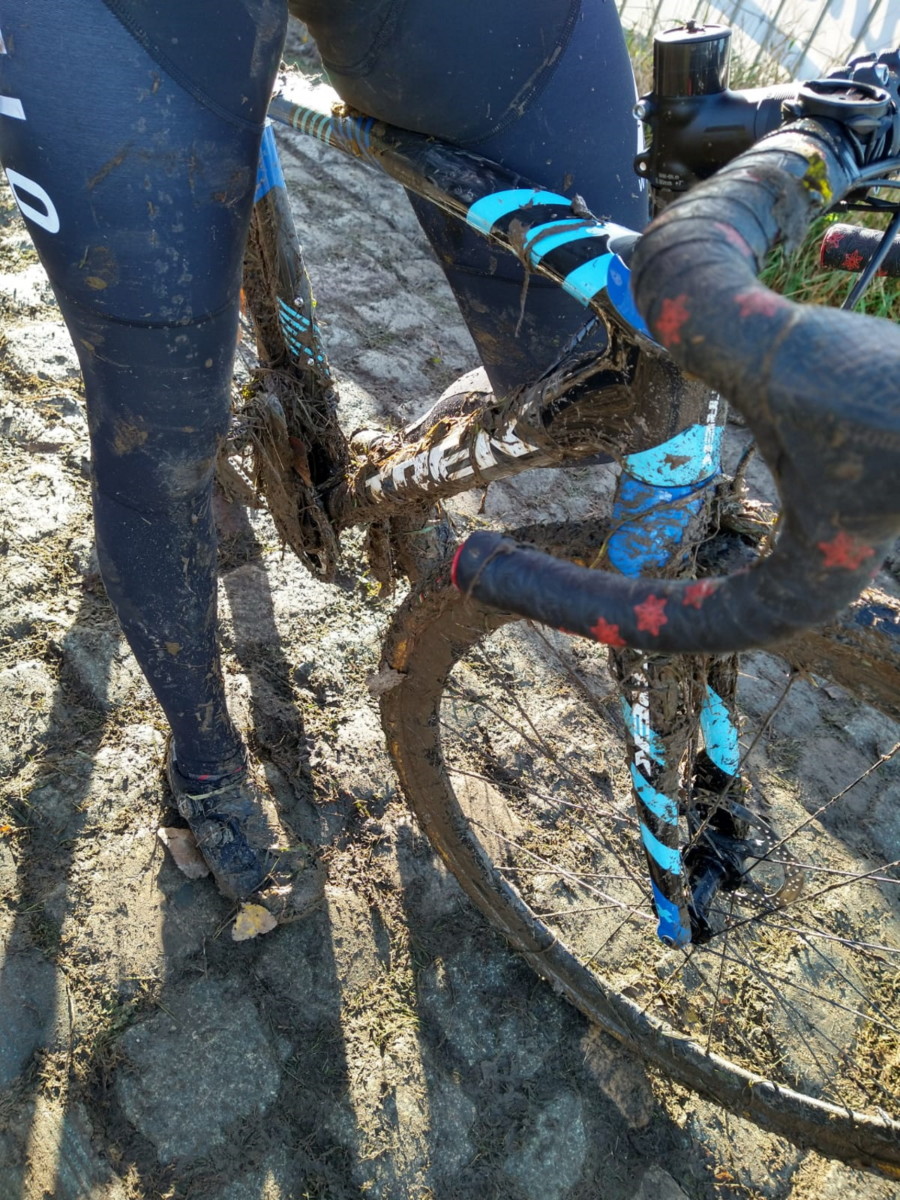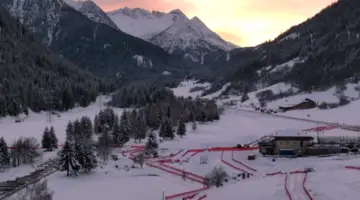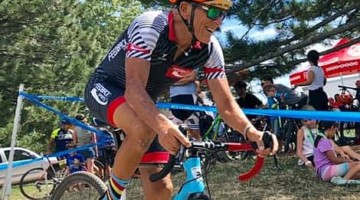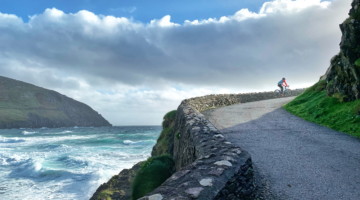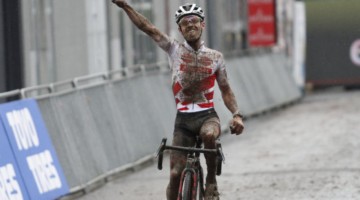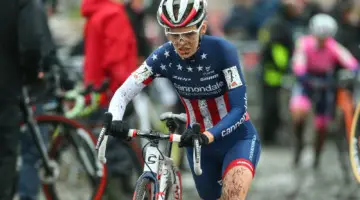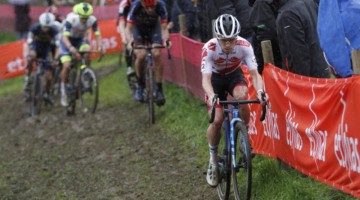Corey Coogan Cisek is back! The author of the Cyclocross Apprenticeship also now has a new apprentice. Read on for the full details from our columnist in Belgium.
You were introduced to our team last year when we were “VeloRevolution – Cyclocross Custom.”
This season, we are back, bigger and better than ever (literally).
Irish rider Michelle Geoghegan and I started the team last year because, I guess, we like to do hard things! Why not start a team during a global pandemic?
Brussels-based UK rider Laura Greenhalgh joined us in November 2020. Greenhalgh balances a demanding job at POLITICO Europe with training. Clearly, she shares our “why not do more?” attitude.
This year, cycling supply chain issues have made it a tough year to start or grow a team, so naturally, we decided “go big or go home!” We added two more riders and became a UCI Cyclocross Team. The team is registered in Ireland, based in Belgium, and has riders from Ireland, the UK, and the United States.
This year we added another American: Allison Arensman, who is also my housemate here in Belgium. You might know Allison’s Palmares, but I’m not sure you know her dedication, discipline, and organization. Certain that she wanted to race “a Belgian season,” she networked with me last winter. I suspected, and it’s proven true, Allison is someone who gets things done. Stubborn determination is a valuable asset in this land!
Rounding out the team is Ishbel Strathdee, a U23 Scottish talent with “mad skills.” I coach Ishbel via my coaching business, Triple C Coaching. I will never forget when she recorded in Training Peaks: “Track Stand, 1 hour.” That’s Ishbel for you!
Our team’s goal is to provide a support structure/development pathway for riders not from the European continent seeking to “make it” on the demanding Belgian cyclocross scene. What this looks like is top-level mechanical and soigneur support at the races, as well as day-to-day support navigating training, racing, and life in a new country.
Being a newbie to Belgium is exhausting. Allison and Ishbel benefit from the years Michelle, Laura, and I spent learning how to live and race here. We know the racecourses, can predict tire treads and pressure, and, most importantly, know the location of inschrijving (number pickup) and bathrooms at the races!
We became a UCI team only partially for the parking! While it’s a blast to have the UCI logo emblazoned on our VeloRevolution kit, that’s only half of it. Our UCI status opens doors…not the least of which is better parking. You laugh, but…
Here’s what it looks like this year: our team arrives in two vehicles and is directed to park next to the sign with an image of our kit. We park and move on with our day.
Last year, parking was routinely a 30-minute hassle, during which parking guards would fumble to ensure that we received parking befitting our humble nature. At Boom, we were moved mid-warmup, so as not to be seen by the television cameras when they panned. At Bredene, we were moved twice, first to bakery parking, and then out of it, when it was determined we interfered with bakery traffic.
It’s silly, but compare Allison and Ishbel’s first season to mine. They get in a vehicle and are driven to the race where parking is seamless and we accompany them to inschrijving (Michelle and I speak enough Dutch to aid this process somewhat). My first year, I drove myself, via a GPS set to a likely unreliable address I found buried on the race’s website, giving myself a 90-minute buffer for parking and sign-on. I cried over parking skirmishes twice during my first season. It took me some time to “thicken my skin.”
What we are hoping to achieve for Allison and Ishbel is that they can come over here and mostly focus on racing their bikes!
All the Paperwork
It’s still a bit difficult to travel to Europe.
Despite my vaccinated status, it took two forms for the Netherlands, one form for Belgium, and three negative COVID tests to get here and be released from quarantine.
Remember when Belgium had very high numbers during the first wave of COVID-19? It was alleged that their numbers were so high because they did a better job counting. That’s likely true. Belgium has an impressive amount of government red tape.
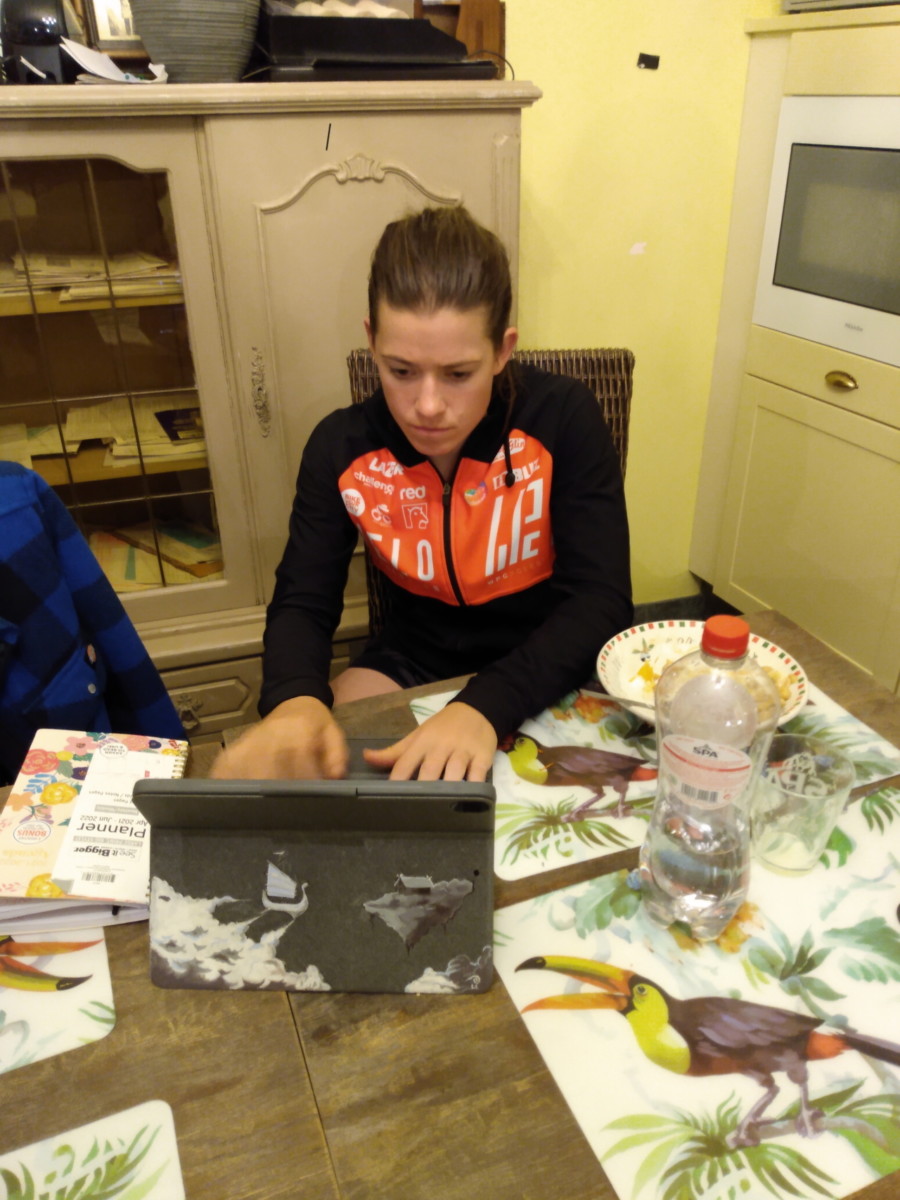
Allison puzzles over Belgian race registration during a pandemic. photo: courtesy of Corey Coogan Cisek
Belgium has created a system that, theoretically at least, prevents COVID from entering via travelers, while keeping borders open. In short, a vaccinated traveler from a red zone: A) shows proof of vaccine, B) registers whereabouts for the last 14 days, C) takes a COVID test on days 1-2 and 7 after arrival, D) Is released from quarantine assuming negative on day 1-2. Easy enough?
However, as an American, I found several places to get stuck…in a Belgian logic loop.
It went like this. “You need a code to test. You cannot have a code because you are not Belgian. You need a code to test.” (Turns out, I had a code, sent to my Belgian phone when my American SIM was still in!) Many, many forms later, I untangled all the “sticky” parts and I have many codes!
Did I mention that we have spectators at the races again?
Per government laws for large gatherings, all fans must be “COVID safe.” Belgium has an app: COVIDSafeBE. The system serves as proof that you have recovered from COVID, are vaccinated, or have a recent negative PCR. The app generates a QR code that’s scanned upon entry (“a COVID-safe ticket”) to a bar, restaurant, or large event. Because races use a barcode scanner, traffic proceeds quickly and smoothly through the entry gates.
For a while, we were “those Americans,” clutching our cardstock vaccine cards and trying to explain that, really, these are our proof of vaccination! However, we’ve finally found a way to get into COVIDSafeBE as foreigners. When I got the QR code with a BE flag on it…well, I felt like I had “made it.”
And Then the Rain Came
It’s been unusually wet in Belgium of late.
I interviewed Helen Wyman for a recent piece on the Koppenberg for Challenge tires. Asked to predict the weather, Wyman predicted dry conditions. She said, “In the old days, on the old course, it was epic mud, always. We rode muds every time. In more recent years, it has been dry. The last time I won, I was on Grifos.”
Thank you Helen, as it seems your prediction brought back the “old days.” This year’s Koppenberg was “epic mud.”
If you haven’t watched the Koppenberg (and Clara Honsinger taking the win), do get around to it.
I actually did my preride of Koppenberg on Wednesday and it was basically dry. We could have raced on Grifos!
But then the rain came…every day…for several days.
We lost Laura on the morning of Koppenberg. The team went out to do preride, but Laura didn’t come back. Turns out, when she went to do a second lap, her bike became so mud-caked that the wheels no longer turned. It took her an unusually long time to get back to the van.
In the meantime, Michelle returned and reported that many of the Junior Men were running the Koppenberg!
Our pre-race discussion included 1) what pressure to run, 2) whether to remove our mud spikes to run the cobbles, 3) how often to pit.
The answers: 1) very, very low, 2) No, but I may never forget the sensation of spikes on rock, 3) on the half lap.
I’m going to be honest here. There’s no type of racing I love more than “epic.” I really rather like a bit of a disaster. If someone mentions “running the whole race,” I’m in! True to form, Koppenberg proved my best race thus far this season!
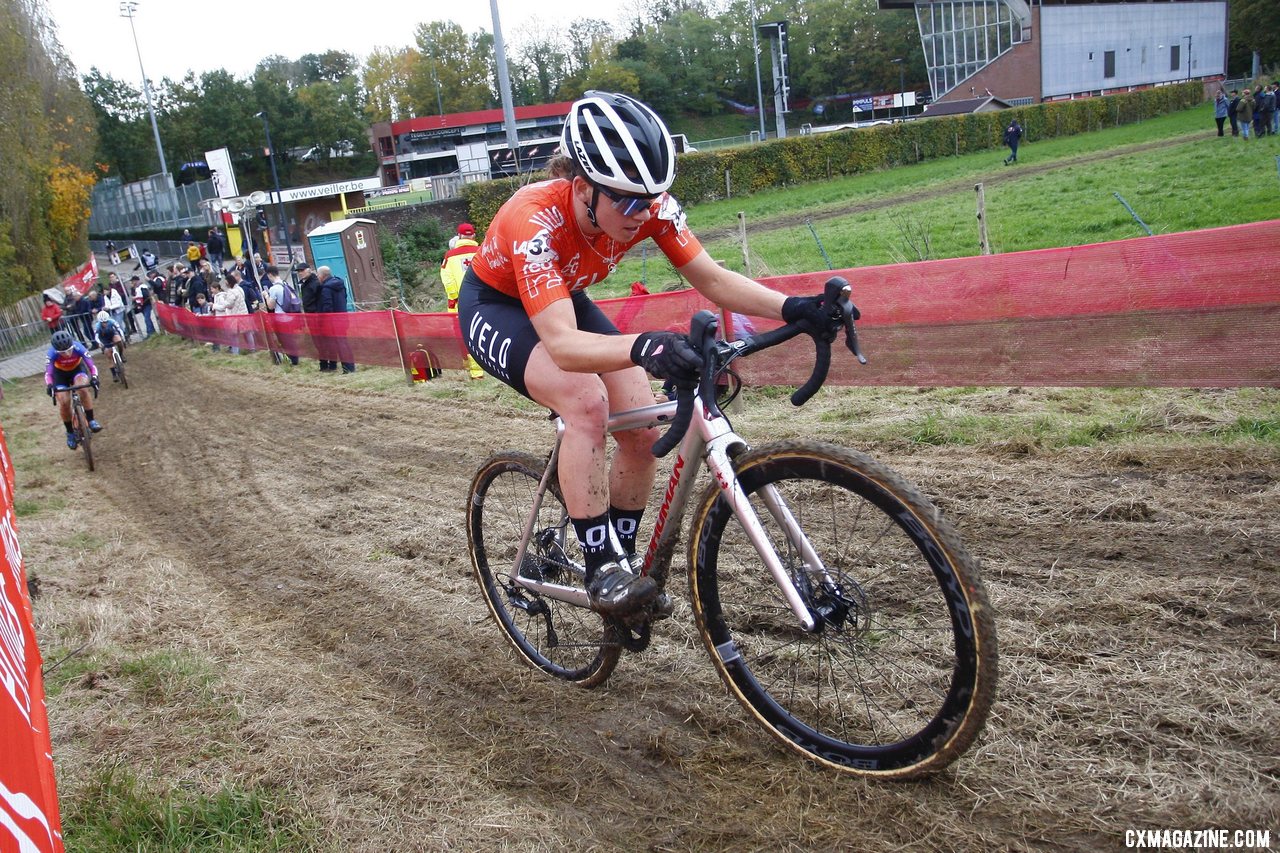
The team has grown and races on the biggest stage, including at the 2021 UCI Cyclocross World Cup Overijse on October 31. © B. Hazen / Cyclocross Magazine
Racing in those conditions rewards those who are patient. It’s a bit of a time trial, but with horrible consequences for going too hard. If you push too far into the zone where you lose coordination, you will fall over like a rag doll! The race is also a cerebral one. You are fully on alert at every moment, remembering and revising lines lap after lap, rut after rut.
I feel lucky to have been part of a Koppenberg for the record books!













